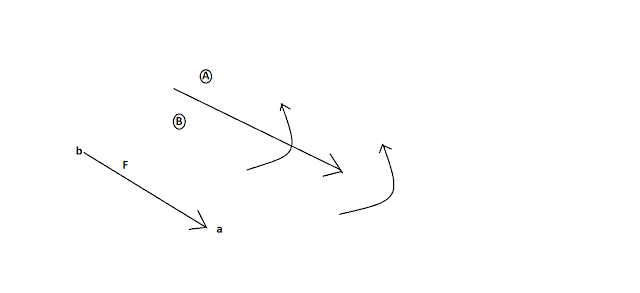PRINCIPLE
A body or particle is said to be in equilibrium if the net
resultant force acting on a body becomes zero i.e. the net resultant effect of
the body is in stable condition.
R2 = Σfx2+ Σfy2, R = 0 , (for equilibrium condition)
Σfx2+ Σfy2 = 0, Σfx
= 0, Σfy = 0 ΣmA = 0
R = 0, Σfx2+ Σfy2
= 0, Σfx = 0, Σfy = 0 ΣmA = 0
A body or particle is said to be in equilibrium if the
following conditions are satisfied
- Algebric sum of all the forces are acting in the X – direction is equal to zero [( ͢+) Σfx = 0]
- Algebric sum of all the forces are acting in the Y – direction is equal to zero [ (+↑)Σfy = 0]
- Algebric sum of all the moments of all the forces about any point or axis is equal to zero [ΣMA = 0]
for the shake of analysis we can draw the figure seperatly in free space swoing all the active
forces and the reactive forces replacing all the contact surface called the
free body diagram / space diagram /F.B.D
BOW’S
NOTATION
DEFINATION
For graphical representation of a force same conventional
methodology is adopted to denote the force , called bow’s notation.
In bow’s notation , two English capital latter is palsed on
each side of the line of action of force
In figure force F is represented by (A) (B) bow’s notation.
EXAMPLE
let F1, F2 & F3 are the
forces are acting on a body and R be the resultant of all the forces as soon in
figure.
(A)(B)(C)(D) are the notation are used to represent forces.
(A)(B) → F1 & ab = F1
(B)(C) → F2 & bc = F2
(C)(D) → F3 & cd = F3
(D)(A) → F4 & da = F4
[A represents the area between F1 & R]
LAMI’S
THEOREM
STATEMENT
“If
three coplanar forces are meeting at a point in rigid body or particle be the
equilibrium then each force is directly proportional to the “sine” of the angle
between the other two forces”
EXPLANATION
Let , P, Q, R are three forces acting on a particle as shown
in figure.According to the Lami’s theorem
P α sine α ; P = K sine α
Q α sine β ; Q = K sine β [ K = constant]
R α sine λ ; R = K sine λ
Constant = K = P/ sine α = Q/sine β = R/ sine λ
PROOF
From , ∆ABC
Now from triangle law we can say
AB/sine(180ᶱ - λ) = BC/sine(180ᶱ - α) = AC/sine(180ᶱ - β)
P/ sine α = Q/sine β =
R/ sine λ (proof)







No comments:
Post a Comment